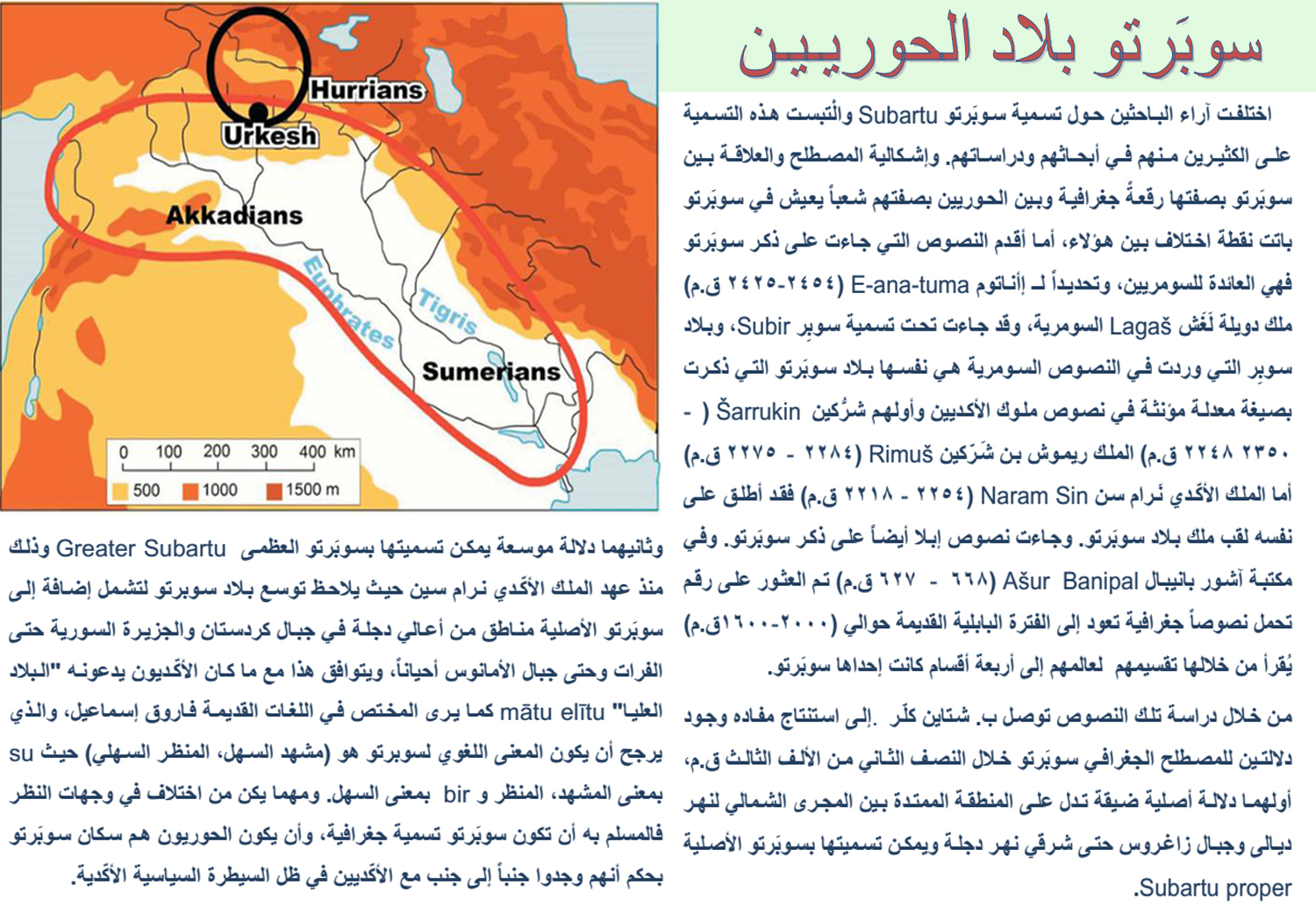Back to Subartu Exhibit
Next poster

|
Subartu, the land of the Hurrians: Researches have different opinion about the name Subartu. The controversy of this term and the relation between Subartu the geographical location and the Hurrians as the people who lived in Subartu, became a point of difference between the two. The oldest texts that mentioned Subartu dates back to the Sumerians, and to be more specific, it dates back to Eannatum (2454-2425 B.C.) king of the Sumarian city of Lagash. It was mentioned as Subir. And Subir land that was mentioned in the Sumerian texts is the same one mentioned in the female form in the texts of Akkadian kings, the first being Sargon (2350-2248 B.C.) and king Rimush son of Sargon (2284-2275 B.C.). Akkadian king Naram-Sin (2254-2218 B.C.) called him self the king of Subartu. Ebla texts also mentioned Subartu. In the library of Ashurbanipal (668-627 B.C.), archaeologist found a tablet with a geographical text dating back to the old Babylonian period (2000-1600 B.C.). In the text, there is a division of their world into 4 parts, one of which is Subartu.
By studying these texts, P. Steinerkeller reached a conclusion: there are two meanings of the geographical term Subatru during the second half of the third millennium B.C. The first has a narrow meaning and indicates the area between the northern stream of Diyala River and Zagros mountains all the way to the east of Tigris, and it can be called Subartu proper. The second is more expanded and it can be called Greater Subartu, because, as of the reign of the Akkadian king Naram-Sin, we notice an expansion in Subartu land to include the original Subartu lands and the areas above the Tigris in Kurdistan mountains and Syrian Jazirah all the way to the Euphrates and even the Amanos mountains at times. This coincide with what the Akkadians called mātu(m) elītu(m), as philologist Farouk Ismail thinks. and this is probably the linguistic meaning of Subartu (plain view) where “su” means view and “bir” means plain. No matter what are the opinions, what is sure is that Subartu is a geographical term, and the Hurrians are the inhabitants of Subartu, because they are side by side with the Akkadian in the Akkadian reign period.
|